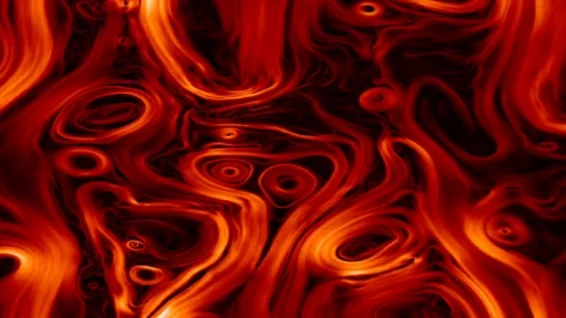Mike Brown is the Morris L. Clothier Professor of Physics at Swarthmore College. Prof. Brown has operated the Swarthmore Spheromak Experiment for 25 years to study fundamental magnetohydrodynamics problems connected to astrophysics. These include laboratory experiments in magnetic reconnection, plasma turbulence, and self-organization. He earned his BA Physics from Pomona College in 1981, and his PhD from Dartmouth in 1987. He was a senior research fellow at Caltech from 1987-1994 and has been at Swarthmore since 1994. Prof. Brown is a Fellow of the the APS and recipient of the APS Award for Research at an Undergraduate Institution. He is currently Vice-Chair of the APS Division of Plasma Physics and Chair-Elect of GPAP.
Kristopher Klein is an Assistant Professor at the University of Arizona in the Department of Planetary Sciences and at the Lunar and Planetary Laboratory. Prof. Klein studies basic processes in plasmas, with a particular focus on modeling space and astrophysical systems, describing the transport and dissipation of energy in such systems. He received a BA in Physics and Mathematics from Luther College in 2008 and a PhD in 2013 from the University of Iowa modeling solar wind turbulence. From 2014 to 2016, he worked at the University of New Hampshire as an NSF Atmospheric and Geospace Science Postdoctoral Research Fellow studying the dissipation of plasma turbulence and preparing predictions for NASA’s Parker Solar Probe (PSP) mission. In 2016, he joined the SWEAP science team on PSP at the University of Michigan, and continues as a member of that team after starting his current position at the University of Arizona in Fall 2018.
Matthew Kunz is an Assistant Professor at Princeton University in the Department of Astrophysical Sciences and at the Princeton Plasma Physics Laboratory. Prof. Kunz uses analytical and numerical tools to investigate magnetic fields and multi-scale plasma dynamics in a wide variety of astrophysical and space systems, including molecular clouds, protostellar cores, the intracluster medium of galaxy clusters, black-hole accretion flows, protoplanetary disks, and the solar wind. He received degrees in Astronomy-Physics and Music from the University of Virginia in 2003 and a PhD in Physics from the University of Illinois at Urbana-Champaign in 2009. From 2009 to 2011, he worked as a postdoctoral research associate at the Rudolf Peierls Centre for Theoretical Physics at the University of Oxford. Afterwards, he moved to Princeton University as a NASA Einstein Fellow and a Lyman Spitzer Jr. Fellow, joining the faculty there in 2015.
Carolyn Kuranz is an Associate Professor at the University of Michigan in the Department of Climate and Space Science and Engineering. Prof. Kuranz studies high-energy-density physics using high-energy laser facilities relevant to supernova explosions, accretion phenomena, and star formation. She received her AB in Physics from Bryn Mawr College in 2002 and her PhD in Applied Physics from University of Michigan in 2009 studying Rayleigh-Taylor instabilities in the high-energy-density regime. She joined the Research Faculty at the University of Michigan in 2009. In 2015 she became the Director of the Center for Laser Experimental Astrophysical Research. Much or her research is performed at the Omega Laser Facility and the National Ignition Facility.
Nuno Loureiro is an Associate Professor of Nuclear Science and Engineering and of Physics at Massachusetts Institute of Technology. He obtained his PhD in Plasma Physics from Imperial College London in 2005, followed by post-doctoral research positions at the Princeton Plasma Physics Laboratory and at the Culham Centre for Fusion Energy, UK. From 2009 to 2015, he was a researcher at the Institute for Plasmas and Nuclear Fusion at IST Lisbon, Portugal, and joined MIT in 2016. He is the recipient of the 2015 Thomas H. Stix Award for Outstanding Early Career Contributions to Plasma Physics Research of the American Physical Society. His research expertise is in magnetic reconnection and turbulence in magnetized plasmas.
Jason TenBarge is an Associate Research Scholar at Princeton University in the Department of Astrophysical Sciences and at the Princeton Plasma Physics Laboratory. Dr. TenBarge studies basic plasma processes by applying and developing analytical and numerical tools to understand kinetic dissipation and transport processes in space and astrophysical plasmas. He received degrees in Astrophysics and Mathematics from Indiana University in 2003 and a Ph.D. Physics in 2009 from the University of Texas at Austin, where his research focused on relativistic plasma astrophysics. From 2009 to 2013, he worked as a postdoctoral research associate at the University of Iowa studying solar wind turbulence. Afterwards, he moved to the University of Maryland College Park as a research scientist from 2013 to 2017. In 2017, he joined the astronomy and plasma physics group at Princeton University.






